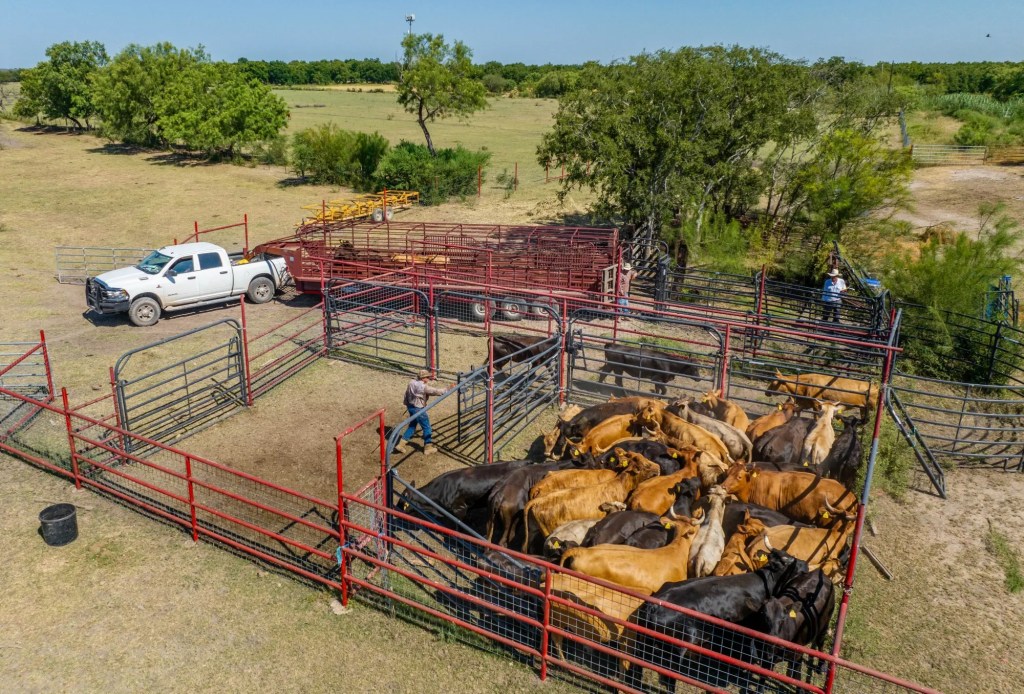
By Emma Court, Bloomberg
There’s no question that steak and hamburgers contribute to global warming, driven by cows’ potent methane burps and their wide-ranging grazing habits. But a warming planet with intensifying extreme weather is also affecting the price of your steak and hamburgers.
After years of drought, pastures haven’t been producing enough grass to feed cattle. So ranchers have been sending their animals to the slaughterhouse earlier, cutting back herds even as Americans eat more beef. This is sending prices to record highs.
Average ground beef prices in city supermarkets surpassed $6 a pound in June, while the cost of uncooked beef steaks approached $11.50 a pound. Those levels are the highest in a decade, according to US Bureau of Labor Statistics data.
The upward march of prices illustrates a phenomenon known as climate inflation, in which droughts, heat waves, floods and wildfires raise prices for everything from home insurance to groceries. While some price hikes are so far proving temporary, others are longer-lasting, like beef, which is expected to stay expensive for at least the next few years.
“This is one indicator of how climate change will affect our food system, and it’s playing itself out in beef right now,” says Ben Lilliston, director of rural strategies and climate change at the Institute for Agriculture and Trade Policy, a Minneapolis-based nonprofit. “You’re seeing it in other commodities, like coffee.”
Long-lasting drought
US beef prices are spiking after years of drought in areas where cattle are raised. In the southwestern US in particular, which includes cattle-producing areas like California’s San Joaquin Valley, drought has exceeded historical expectations over the last quarter-century, says Brad Rippey, a USDA meteorologist.
Scientists have found that global warming’s higher temperatures make droughts more likely to happen in some places and more severe. For example, a 2020 study that examined anomalously dry conditions in the western US and northern Mexico between 2000 and 2018 determined that climate change contributed to nearly half of that drought’s severity.
Drought conditions in the US in recent years were also enhanced by several instances of the naturally-occurring La Niña climate pattern, which tends to leave portions of the US drier than usual, Rippey says.
Ranchers have some options, including feeding their herds alternatives to pasture grass, such as hay. But as dry conditions continue, selling the cattle begins to make more financial sense than buying the expensive feed. US herds have been dwindling for years, and are now smaller than ever even as drought conditions have improved.
“The long-term impact is that you have less ability to produce, which is where we find ourselves now after four or five years of this process,” says Derrell Peel, agribusiness professor at Oklahoma State University.
Demand from consumers for beef, meanwhile, has grown, which also contributes to higher prices. That generates a trade-off between cashing in on today’s high prices and holding animals back for breeding — a process that takes years to pay off. A female calf born this year could be sold, entering next year’s beef supply, or it could be bred in 2026 and rear a calf ready for market by roughly 2028. Cattle usually have only one calf at a time, in contrast with other animals like chickens and pigs.
Other factors affecting cattle ranching besides drought include higher interest rates and greater costs for inputs ranging from the cattle themselves to feed and equipment.
More climate challenges
Most cattle spend their lives outdoors, exposing the animals to other hallmarks of climate change like extreme heat. High temperatures can affect cattle’s reproductive health and their growth, extending the time and cost of raising animals.
In the highest-emissions scenario, it could get so hot by 2050 that fewer parts of the world will be suitable for cattle production, according to the most recent Intergovernmental Panel on Climate Change report.
Another climate change-related threat is also looming: a deadly parasite known as the screwworm, which was long-ago eradicated in the US but has made a resurgence in Mexico. It thrives in warmer climates, and scientists say that climate change could facilitate the fly’s spread.
While the majority of American beef is produced domestically, the US routinely imports young cattle from Mexico to fatten up in American feedlots, says David Anderson, a professor and livestock economist at Texas A&M University. The supply of those cattle, the equivalent of about 4% of US calf production, has been intermittently cut off since November because of the threat the screwworm poses.
“On the margin, that’s a bunch of animals,” he says. “That’s contributing to high prices.”
More stories like this are available on bloomberg.com
©2025 Bloomberg L.P.
<




